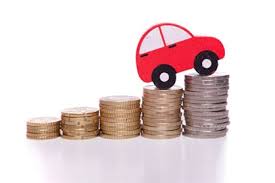 Insurance companies often use statistical calculation methods to determine how much coverage they should offer their customers and how much the premium should be. It’s not easy at all and they have to consider a long list of things.
Insurance companies often use statistical calculation methods to determine how much coverage they should offer their customers and how much the premium should be. It’s not easy at all and they have to consider a long list of things.
Let’s discuss the factors that determine insurance coverage and premiums here.
Your location
Where do you live? You don’t have to tell me, but you have to tell this to the car insurance company. Your location is among the crucial factors that determine the coverage and premiums of the policy.
If you live in a small town like Taos, New Mexico or in Santa Barbara, California, the the odds of getting into an accident are low. Big cities like New York, on the other hand, are full of traffic and accidents are very common.
The vehicle type
If it’s a large trailer truck, then you’ll be driving it on the highway. Highways are much more risky, which means the odds of the truck colliding with another truck or a passenger vehicle is high.
A small car or a pickup truck on the other hand are not for driving down the highways, implying increased safety. As the vehicle type is linked with accident possibilities, it determines the coverage limit and premium amount.
Driver’s age
This one’s a bit tricky. You may wonder why your age is more important than your car’s age. Actually, both are important. The driver’s age is used to build the statistical model that indicates the possibility of an accident caused by the driver.
Young drivers, for example, are prone to reckless driving. That aside, young drivers, especially teenagers, lack sufficient driving experience. They have to pay the highest premium. But once a driver crosses 25, he pays less of an insurance premium.
Vehicle cost
Is your car an expensive one? An average one? Or an older model? Expensive car buyers pay low premiums because those cars have state of the art safety features and the quality of their parts is so high that they don’t damage easily.
A not-so-expensive car, on the other hand, lacks some high-tech safety specs like driver assistance system, anti-lock brakes, collision mitigation, tire pressure monitoring sensor, rollover prevention, etc. Such vehicles cost less, but the buyers have to pay higher premium amounts.
The driver’s profession
Auto insurance companies consider the driver’s occupation. Someone spending more on his car implies the car will be in good health for years to come. In some professions, people tend to spend more because they spend more time on the road and carry certain equipment with them that ensures the car’s safety. Such people pay less money for their insurance premiums.
Driving record
It doesn’t require much grey-matter to understand why past driving records are important in determining the possibility of an accident. A driver who has caused an accident before is more likely to cause another accident in the future.
Insurance companies reward people with safe driving records. If someone has always driven safely, then he can expect discounts and low-premiums as the reward.
Deductible and premiums
In case of car insurance, the relationship between the deductible and premium is a bit complicated. Having high deductible implies a low coverage, and consequently, a low rate of premiums.
But at the same time, a high deductible indicates that the owner considers the odds of an accident are higher. In short, a high deductible indicates more risks. Insurance companies apply some complicated mathematical formulas to calculate the premium in the case of high deductibles.
Credit score
Believe it or not, your credit score matters for auto insurance premiums. A decent credit score implies less money being paid for insurance premiums while a poor credit score indicates risk. Hence, try to improve your credit score.
Other factors
There are a few other factors that car insurance providers take in stride when they determine the insurance premiums. One such factor is modification. You can suppress it, but that may lead to undesirable consequences. There’s a separate type of insurance for modified cars. Cars with bigger and very powerful engines are likely to incur heavy damage upon getting into accidents. The drivers, as a result, pay higher insurance premiums.
About The Author
This article was written by Peter, the finance blogger and author of Finance Care Guide. He is an avid writer and loves to write about frugal living and money management tips.


No Comments